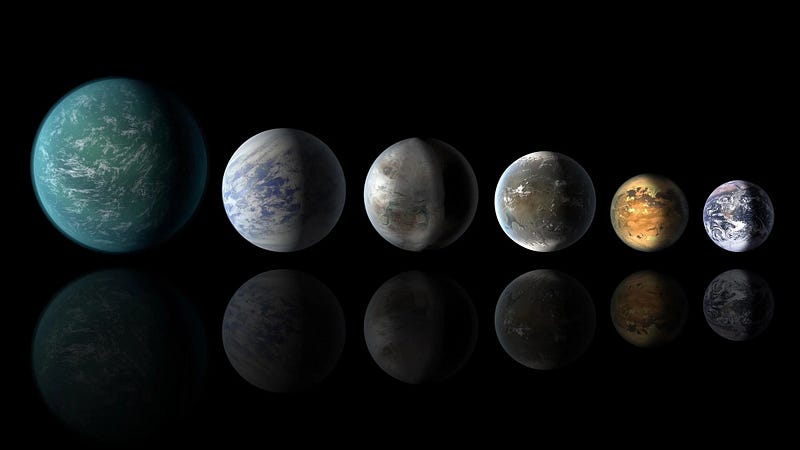Exploring the Count of Habitable Planets in the Universe
Written on
Chapter 1: The Quest for Habitable Worlds
Many people often inquire about the number of potentially habitable planets in the universe on my Ukrainian channel. For instance, they ask whether humanity has any idea about the possible count of such planets, and if so, what they might be.
Regrettably, providing a definitive answer is quite challenging. Our current observational tools are insufficient for accurately studying planets orbiting distant stars.
In our solar system, Earth stands out as the only fully prepared planet for habitation. While other planets may have the potential for settlement, they would necessitate intricate engineering solutions or extensive terraforming efforts to support human life.

The ideal candidates for potential colonization within our solar system include Mars, the Moon, Venus, select asteroids, and the moons of Jupiter and Saturn.

When we consider the larger universe in estimating the number of potentially habitable planets, we can turn to Friedman’s cosmological principle. This principle suggests that the universe is largely uniform in all directions. While this doesn't imply that every region of the universe is identical, it indicates that on average, we observe a similar number of galaxies and types of stars wherever we look.
This principle allows us to make educated guesses based on our limited observations. Roughly 10% of the stars in the universe resemble our Sun and could, therefore, host planets that might support life. However, planets around other types of stars could also be viable for life.
Section 1.1: Estimating Planetary Counts in the Milky Way
The Milky Way galaxy is thought to contain approximately 100 billion stars, each potentially hosting multiple planets.

Consequently, the total number of planets in our galaxy is estimated to be between 80 and 100 billion. As of now, we have identified around 5,000 exoplanets, with approximately 500 classified as Earth-like. This leads us to theorize that a similar ratio could apply to the yet undiscovered planets, suggesting that the total count of Earth-like planets could range from 5 to 20 billion.

It's important to recognize that modern techniques for observing exoplanets yield limited data, primarily regarding their mass and orbital radius. In some instances, we might gain insight into the planet's size. Thus, when we discover an exoplanet, we often cannot determine whether it is thriving with life or a barren rock.
Section 1.2: The Cosmic Landscape of Habitability
Current estimates suggest there are about 100 billion galaxies in the universe. If Friedman’s cosmological principle holds true, then each galaxy could harbor billions or even tens of billions of potentially habitable planets.
Therefore, the aggregate number of potentially habitable planets might range between 500 and 2,000 billion. However, this figure is quite speculative and is subject to significant adjustments as our observational techniques improve.
Chapter 2: Insights from Experts
To gain further understanding, consider watching the following videos that delve deeper into the topic of habitable planets.
The first video titled "Brian Cox - How Many Habitable Planets Exist in Our Galaxy?" offers valuable insights from a renowned physicist discussing the potential for life beyond Earth.
The second video, "How Many Habitable Planets Are There?", explores various factors influencing the existence of habitable worlds across the universe.
If you're interested in more articles about space, feel free to subscribe to our channel and pose your questions for future discussions!